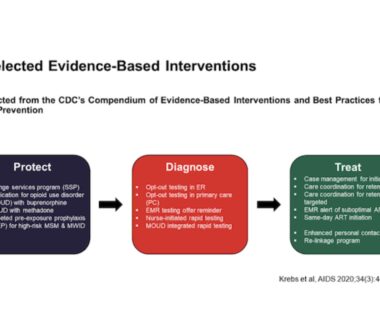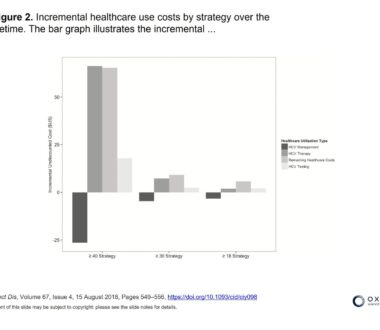
COVID-19 Can Change The Way We Respond To The Opioid Crisis – For The Better
The Coronavirus (COVID-19) pandemic has brought unprecedented challenges in healthcare delivery to people who use drugs. However, it may also have provided impetus to precipitate innovative changes in providing opioid overdose prevention, syringe services, and medication for opioid use disorder (MOUD) to this vulnerable population. In a new Viewpoint in Psychiatric Services, CHERISH Research Affiliate Yuhua Bao from […]

Simulation Modeling Presents Opportunities To Support The Public Health Response To The Opioid Crisis In North America
Although there are several evidence-based cost-effective interventions for people with opioid use disorder (OUD), they are underutilized. Questions remain regarding intervention selection, and cost of service delivery. Simulation modeling offers an opportunity to support decision making to address the syndemic of opioid overdose, HIV, and hepatitis C (HCV). In an article recently published in the International Journal […]

In Conversation with Jules Netherland and Daniel Raymond: Engaging Health Economics and Health Services Researchers with Harm Reduction Policymakers and Advocates
When it comes to substance use disorder-related policies and funding, evidence is absolutely necessary though not sufficient. In a recent webinar with CHERISH Research Affiliates, Dr. Jules Netherland, Managing Director of the Drug Policy Alliance Department of Research and Academic Engagement, and Daniel Raymond, Deputy Director of Planning and Policy at the Harm Reduction Coalition, discussed the potential roles […]

Optimizing HIV Prevention in Six US Cities: An Economic Model
In 2019, the United States launched the effort to End the HIV Epidemic by reducing new infections by 75% within 5 years and by 90% within 10 years. This national strategy comes with some new funding for the Centers of Disease Control and Prevention (CDC), the Health Resources and Services Administration (HRSA), and the Ryan White HIV/AIDS […]

Overdose and Re-hospitalization Rates Following Endocarditis Are Lower for Patients Receiving Medications for Opioid Use Disorder
The proportion of hospital admissions for endocarditis attributable to injection drug use increased from 7% in 2000 to 12% in 2013. Endocarditis is an infection in the lining of the heart chambers and valves that can be contracted through shared injection equipment. Rates of endocarditis are disproportionately affecting young people who inject drugs (PWID), which has […]

Will Eliminating Waiver Requirements Improve Access to Buprenorphine for Treating Opioid Use Disorder? Evidence From Increasing the Patient Treatment Cap
The Drug Addiction Treatment Act of 2000 (DATA 2000) permits qualified physicians to obtain a waiver to treat patients with opioid use disorder (OUD) with buprenorphine in office-based practices. In 2016, 47% of all US counties and 72% of rural counties lacked a buprenorphine waivered physician. That year, the Comprehensive Addiction and Recovery Act extended buprenorphine prescribing […]

Hospital Financial Incentives to Improve Care After Opioid Overdose
Early analysis of Pennsylvania’s program Two patients are treated for opioid overdose at two different hospitals, just a few miles apart. The first hospital provides life-saving treatment to reverse the overdose and watches the patient for an hour, discharging them when deemed “medically stable.” The second hospital also provides life-saving treatment but then offers counseling, […]

Methodology Consultation Success Story: Dr. Ashish Premkumar
The incidence of neonatal abstinence syndrome (NAS), also known as neonatal withdrawal syndrome, increased nationally from 3.4 per 1000 hospital births in 2009 to 5.8 in 2012. Recent estimates of NAS cost $1.5 billion dollars with the majority of the financial burden falling to state Medicaid programs. However, pregnancy offers a unique opportunity for women with […]

Revisions to 42 CFR Patient Confidentiality Rules for Substance Use Disorder: What It Means for Health Services Researchers
In August 2019 the United States Substance Abuse and Mental Health Services Administration (SAMHSA) proposed a revision to the Federal rule that protects patient confidentiality for people with substance use disorders, referred to as 42 CFR Part 2. The sixty day comment period has ended and comments are currently under consideration. This proposal seeks to facilitate disclosure […]

USPSTF and CDC Recommend Expanded HCV Testing for All US Adults
The US Preventive Services Task Force (USPSTF) released a draft recommendation for hepatitis C (HCV) antibody and RNA screening in all adults ages 18 to 79. This is a departure from their current 2013 recommendation of risk-based screening, including people who inject drugs (PWID), and one-time screening in baby boomers born between 1945 and 1965. The recommendation […]

Achieving Value in Substance Use Disorder Treatment: Paying for What Works (and Not Paying for What Doesn’t): Workshop Summary
More than 100 policymakers, practitioners, and researchers discussed and debated how payment policy can promote evidence-based, cost-effective substance use disorder treatment, in a recent workshop hosted by the Center for Health Economics of Treatment Interventions for Substance Use Disorder, HCV and HIV (CHERISH) and the Leonard Davis Institute of Health Economics at the University of […]

Increased number of children entering the foster care due to parental drug use
In a recent study published in JAMA Pediatrics, CHERISH Pilot Grant Recipient Angelica Meinhofer examined national trends in foster care entries attributable to parental drug use between 2000 and 2017. There were approximately 5 million foster care entries between 2000 and 2017, 23.38% percent of which were attributable to parental drug use. Moreover, the number of […]
Engage with CHERISH
Submit a Consultation Request or Contact Us to learn more about how CHERISH can support your research or policy goals.